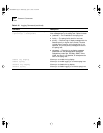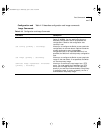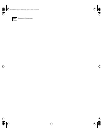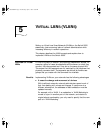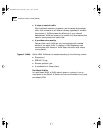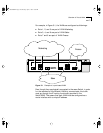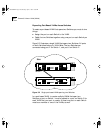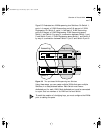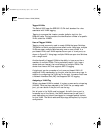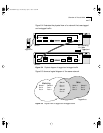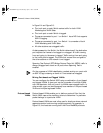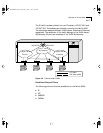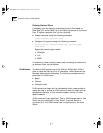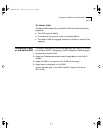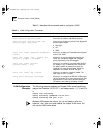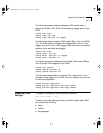
5-6 CHAPTER 5: VIRTUAL LANS (VLANS)
Tagged VLANs
The Switch 9000 uses the IEEE 802.1Q D4 draft standard for rules
associated with VLAN tagging.
Tagging is a process that inserts a marker (called a tag) into the
Ethernet frame. The tag contains the identification number of a specific
VLAN, called the VLANid.
Uses of Tagged VLANs
Tagging is most commonly used to create VLANs that span Switches.
The Switch-to-Switch connections are called trunks. Using tags, multiple
VLANs can span multiple Switches using one or more trunks. In a
port-based VLAN, each VLAN requires its own pair of trunk ports, as
shown in Figure 5-3. Using tags, multiple VLANs can span two Switches
with a single trunk.
Another benefit of tagged VLANs is the ability to have a port be a
member of multiple VLANs. This is particularly useful if you have a
device (such as a server) that must belong to multiple VLANs. The
device must have a NIC that supports 802.1Q tagging.
A single port can be a member of only one port-based VLAN. All
additional VLAN membership for the port must be done using tags. In
addition to configuring the VLAN tag for the port, the server must have
a Network Interface Card (NIC) that supports 802.1Q tagging.
Assigning a VLAN Tag
When a tag-based VLAN is created, it is given a name and a unique tag
(VLANid). Ports are then assigned to the VLAN. As you assign each
port, you can decide if the port will use the tag.
Not all ports in the VLAN must be tagged. As traffic from a port is
forwarded out of the Switch, the Switch determines (in real time) if
each destination port should use tagged or untagged packet formats
for that VLAN. The Switch adds and strips tags, as required, by the port
configuration.
SW9000.BK Page 6 Wednesday, April 1, 1998 11:00 AM



